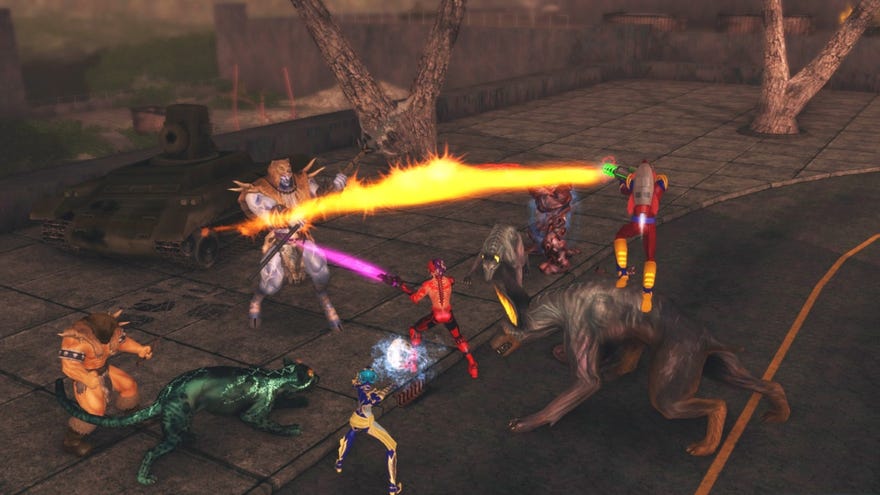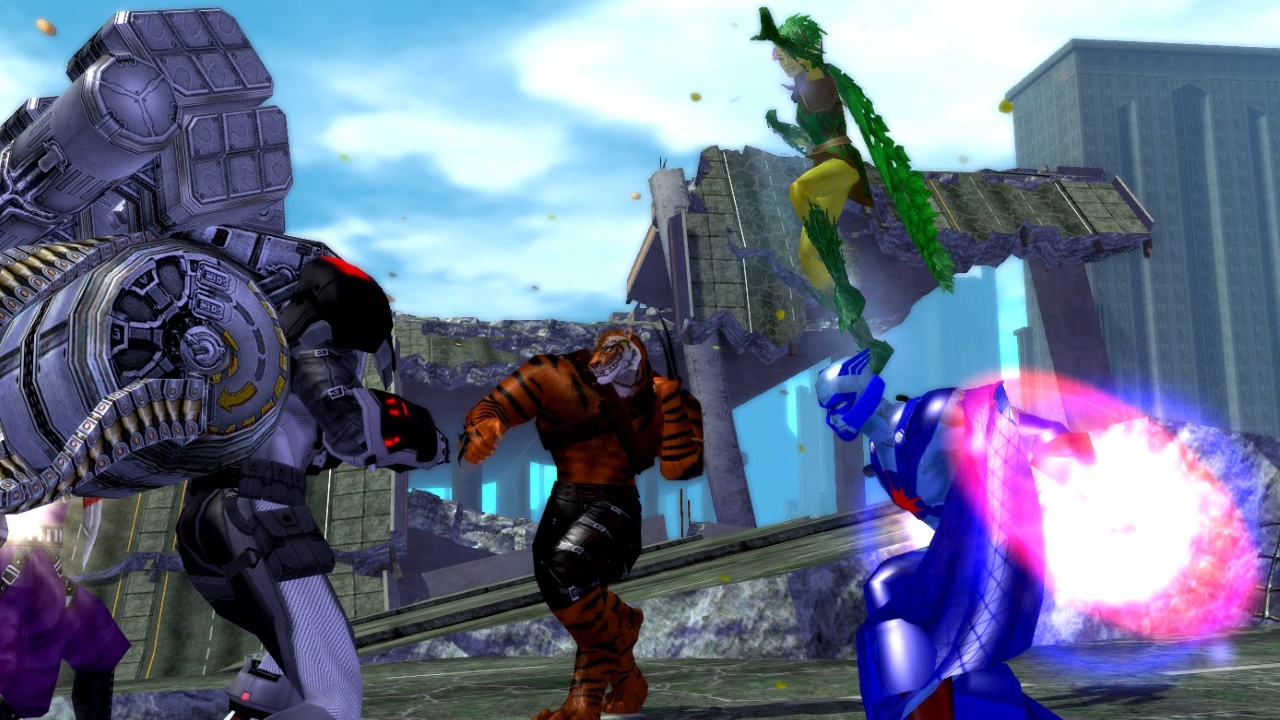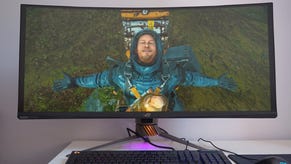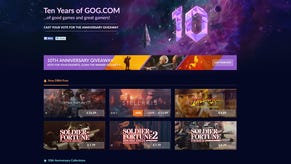How YouTube let's plays are preserving video game history
Please, no take downs
It’s a long-observed fact that the phenomenon of the YouTube let’s play has benefits beyond just entertaining viewers and gradually introducing teenagers to neo-Nazism via YouTube's algorithm. For developers, for example, getting a popular YouTuber to play their latest title can be a significant boost to sales. Ryan Clark, developer of roguelike rhythm game Crypt of the Necrodancer told the New York Times that he had seen a $60,000 boost in sales after PewDiePie showcased his game. What gets overlooked is the (perhaps unwitting) contribution these YouTubers are making to the preservation of video games.
While let’s plays are unquestionably not preserving the game itself, they can function as secondary documentation, and preserve the cultural impact of a game as well as the community that built up around it. They are perhaps best described as a game’s cultural footprint, rather than the beast itself. In some cases, that footprint is the most readily available form of a game, as in the case of P.T.. It was famously removed from the Playstation store following the cancellation of Silent Hills, and despite several fan attempts to remake it on PC, YouTube remains the best place to experience it now it’s gone.
Ken McAllister, co-founder of video game archival group the Learning Games Initiative (LGI) endorses the idea of walkthroughs and YouTube-style let’s plays as forms of secondary documentation, vital to any preservation efforts. “There are all kinds of ways of preserving these things,” said McAllister. “Some involve biochemistry where you're trying to preserve the materials, like textiles and wood and plastic, and those kinds of scientific endeavours. And then there’s times where you’re preserving how people play, where you're shooting both from behind and at the player. You're not only capturing gameplay but you're capturing game style and game reaction, and all of those things will teach future researchers what games mean. That's super important. and certainly these videos preserve how we will understand and remember the impact of games later.
YouTube videos can be heavily edited, cutting out the more tedious elements of the game and getting straight to the action, or to the best reaction from the player. While yes, this can often reflect the core experience of the game, it doesn’t give a full picture. If you rip out all the pages of existential angst and whining from Hamlet and jump straight to him stabbing motherfuckers, you lose the understanding of the full experience. Youtubers are often driven by trends, covering the most exciting parts of the biggest games at the time. This runs the risk of smaller games being forgotten, but it’s useful to reflect what was dominating gaming culture at a given time and why. And, as McAllister notes, the players themselves are key to understanding the game’s cultural footprint.
To use P.T. as an example again (which is slightly naughty on a PC only site) streamer Soapywarpig archived her entire stream on her YouTube channel. While the videos preserve how a game looked and operated, it’s the reaction of the player that documents the culture that builds up around the title. Soapywarpig was the first streamer to reveal the surprise announcement at the end of PT, and her genuine excitement at reaching the end of the game and seeing the twist reveal of Silent Hills, is a major part of understanding why PT was so influential.
The genuine nature of her excitement is important too. YouTube gaming in particular is prone to hyperbole and rehearsed reactions. Soapywarpig’s glee reflects not only the genuinely unexpected Silent Hills announcement as a point in video game history, but preserves the experience games such as these exist to create: joy.
Let’s plays preserve games in ways that simply archiving the software itself does not. Any attempt to preserve online games in particular runs into the problem of how to preserve the community around a game once the fan base has moved on. A defunct MMORPG can be saved on a private server, as in the case of the secret City Of Heroes server that was recently snitched on, but the player base that was fundamental to the experience of the game cannot be archived in the same way. Videos made by and about the community, however, can serve as important documents to preserve the spirit of many games of this type.
This is a viewpoint that Jerome McDonough, an Associate Professor at the School of Information Sciences at the iSchool of Illinois describes. “What interests people about games such as MMORPGS, for the most part, is the human interaction going on there,” said McDonough. “The only way to capture that is through documentation, such as YouTube videos and fan websites.”
James Newman, co-founder of the National Videogame Archive (NVA) thinks that the real value of let’s plays is in suggesting a model for game preservation. Newman’s approach to games preservation is perhaps controversial, stepping away from direct preservation of games themselves.
“My position is one that shifts away from a predominantly software preservation-based approach,” said Newman, “and towards an approach that recognises the central importance of play in constituting the object of our interest. It’s a shift from game preservation to gameplay preservation. I want to ensure that we have a good record of how games were played.”
Newman said that it’s counter intuitive to think that capturing footage of a game turns it from something dynamic into something somehow more static or frozen. “Once you have a sequence of gameplay captured as video you can do things with it that are hard or even impossible during the moment of play,” he explained. “You can freeze frame, rewind, zoom in… In short, you have available the language and grammar of video editing at your disposal. You can scrutinise what’s happening in new ways. You can overlay information, annotate, compare different versions and sequences. The play isn’t absent, the play is right there. Just because games have to be played or co-created doesn’t mean it’s me that has to do the playing!” The NVA calls these particular exhibits “Game Inspectors”.
Despite their benefits to game preservation, YouTube let’s plays, much like many aspects of video game preservation, exist in a complicated legal situation. When you hear “DMCA” it refers to the Digital Millennium Copyright Act, which gives a game’s copyright owners the right to issue those DMCA takedown orders. YouTube videos can preserve the social impact and community of video games, they can themselves disappear without warning.
While some copyright owners have been eager to cooperate with YouTubers -- Devolver Digital has a page on their website specifically to tell YouTubers and streamers that they are free to stream and monetise Devolver video games -- not all publishers have been so willing. Because the modern world moves faster than the legal system, it’s not entirely clear if the inclusion of the YouTuber’s reactions and commentary amounts to fair use or not.
“There are certainly some definitive Let’s Plays that are significant in their own right, and I would want to ensure were preserved,” said Newman. “Given that platforms such as Twitch and YouTube are privately-owned companies, that these videos are currently available does not guarantee their future availability.” He believes that web archiving is going to be an important tool in the game preservation arsenal, which is why the NVA has worked with the British Library to capture key materials that currently only exist online.
Perhaps the most high profile case of a DMCA takedown notice being issued to a YouTuber over a game is PewDiePie receiving a strike from Campo Santo. The Firewatch developers objected to Pewd’s most recent heated gaming moment of the time (i.e.: racism). Sean Vanaman Tweeted at the time that he was “sick of this child getting more and more chances to make money off of what we make”, but also acknowledged they were complicit in the situation, since they had surely made money from the video, which had almost 6 million views. Firewatch was review bombed on Steam followed the announcement.
Few are willing to test the legality of this situation. While some publishers are notorious for issuing DMCA takedowns, or demonetising videos featuring their games, the full tensile strength of let’s plays has yet to be tested in court. Nobody seems to want to be the one to risk ruining a mutually beneficial relationship by setting a legal precedent. That Campo Santo situation illustrates the tricky legal area that let’s plays exist in. While the Firewatch DMCA was motivated by the honourable goal of telling Pewdiepie to go fuck himself, it also shows that these videos can be taken down at the whim of the copyright holder. If a publisher wishes all traces of a game to be removed, they theoretically have the power to do so. It’s unfortunate that currently let’s plays can disappear just as easily as the games they depict
As such, YouTube’s value for preserving games is complicated. Not only can the videos themselves disappear at any moment, but the extent to which they preserve the true experience of these games is questionable. Preservation of this kind isn’t a perfect science. At its best you’ll find streamers like Soapywarpig, who perfectly encapsulates the impact a lost game made on gaming culture, but sometimes it’s more akin to a confused summary written in sand by a racist child. Even in their current state let’s plays are an important part of video game history, so it’s probably an idea to look at how we can improve that currently imperfect science.











